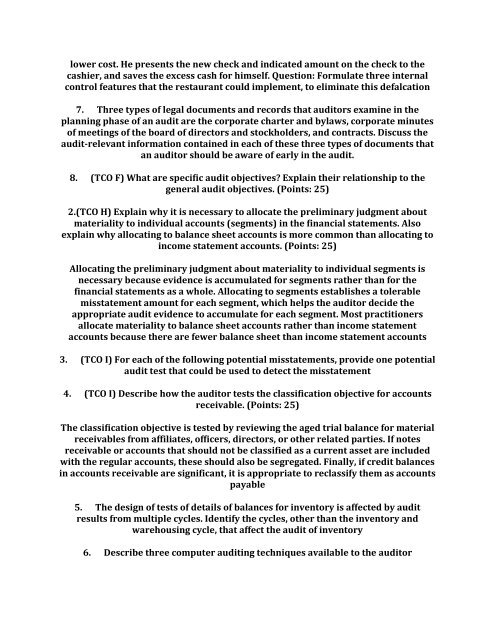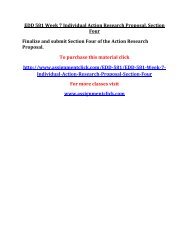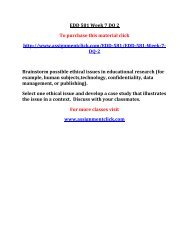DEVRY ACCT 555 Entire Course
acct 555,devry acct 555,devry acct 555 entire course,devry acct 555 entire class,devry acct 555 course project and you decide,devry acct 555 final exam 100,devry acct 555 midterm,devry acct 555 week 1,devry acct 555 week 2,devry acct 555 week 3,devry acct 555week 4,devry acct 555 week 5,devry acct 555 week 6,devry acct 555 week 7,devry acct 555 tutorials,devry acct 555assignments,devry acct 555 help
acct 555,devry acct 555,devry acct 555 entire course,devry acct 555 entire class,devry acct 555 course project and you decide,devry acct 555 final exam 100,devry acct 555 midterm,devry acct 555 week 1,devry acct 555 week 2,devry acct 555 week 3,devry acct 555week 4,devry acct 555 week 5,devry acct 555 week 6,devry acct 555 week 7,devry acct 555 tutorials,devry acct 555assignments,devry acct 555 help
You also want an ePaper? Increase the reach of your titles
YUMPU automatically turns print PDFs into web optimized ePapers that Google loves.
lower cost. He presents the new check and indicated amount on the check to the<br />
cashier, and saves the excess cash for himself. Question: Formulate three internal<br />
control features that the restaurant could implement, to eliminate this defalcation<br />
7. Three types of legal documents and records that auditors examine in the<br />
planning phase of an audit are the corporate charter and bylaws, corporate minutes<br />
of meetings of the board of directors and stockholders, and contracts. Discuss the<br />
audit-relevant information contained in each of these three types of documents that<br />
an auditor should be aware of early in the audit.<br />
8. (TCO F) What are specific audit objectives? Explain their relationship to the<br />
general audit objectives. (Points: 25)<br />
2.(TCO H) Explain why it is necessary to allocate the preliminary judgment about<br />
materiality to individual accounts (segments) in the financial statements. Also<br />
explain why allocating to balance sheet accounts is more common than allocating to<br />
income statement accounts. (Points: 25)<br />
Allocating the preliminary judgment about materiality to individual segments is<br />
necessary because evidence is accumulated for segments rather than for the<br />
financial statements as a whole. Allocating to segments establishes a tolerable<br />
misstatement amount for each segment, which helps the auditor decide the<br />
appropriate audit evidence to accumulate for each segment. Most practitioners<br />
allocate materiality to balance sheet accounts rather than income statement<br />
accounts because there are fewer balance sheet than income statement accounts<br />
3. (TCO I) For each of the following potential misstatements, provide one potential<br />
audit test that could be used to detect the misstatement<br />
4. (TCO I) Describe how the auditor tests the classification objective for accounts<br />
receivable. (Points: 25)<br />
The classification objective is tested by reviewing the aged trial balance for material<br />
receivables from affiliates, officers, directors, or other related parties. If notes<br />
receivable or accounts that should not be classified as a current asset are included<br />
with the regular accounts, these should also be segregated. Finally, if credit balances<br />
in accounts receivable are significant, it is appropriate to reclassify them as accounts<br />
payable<br />
5. The design of tests of details of balances for inventory is affected by audit<br />
results from multiple cycles. Identify the cycles, other than the inventory and<br />
warehousing cycle, that affect the audit of inventory<br />
6. Describe three computer auditing techniques available to the auditor

















